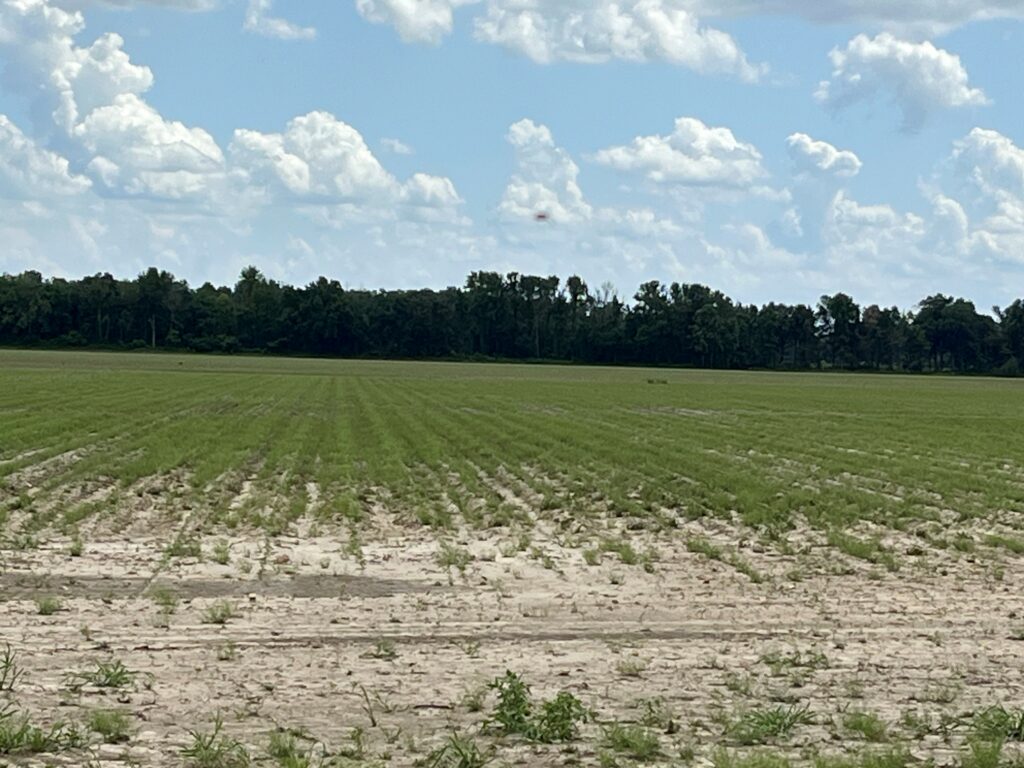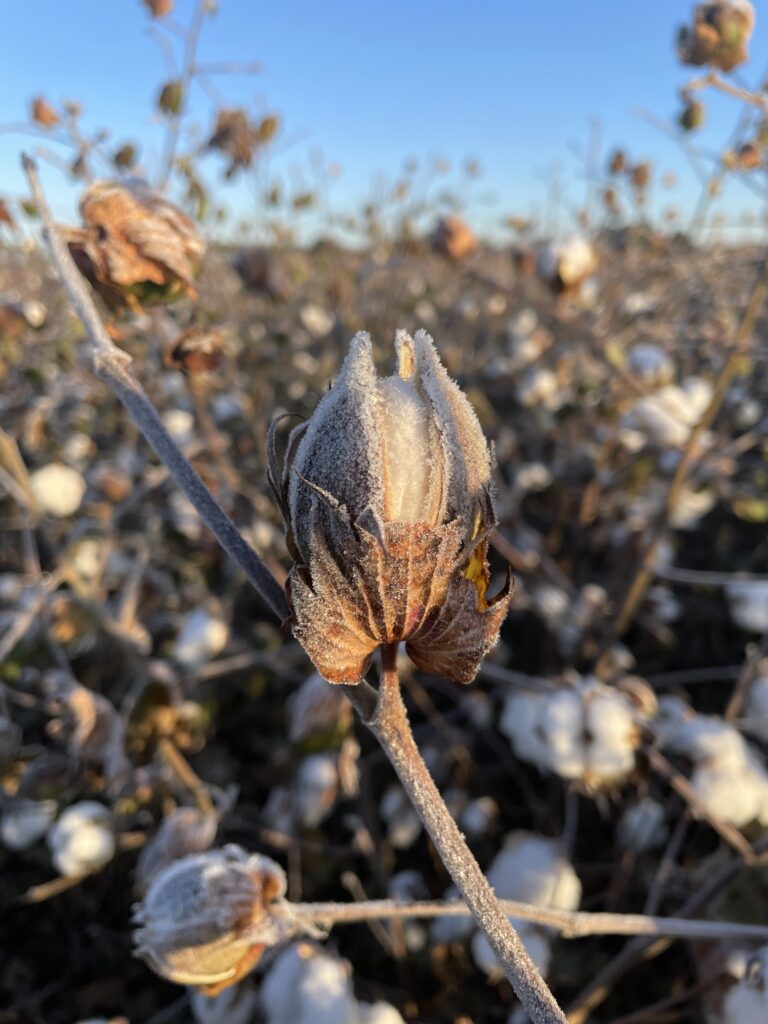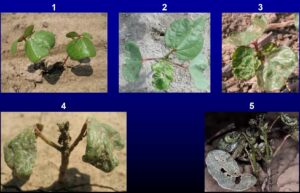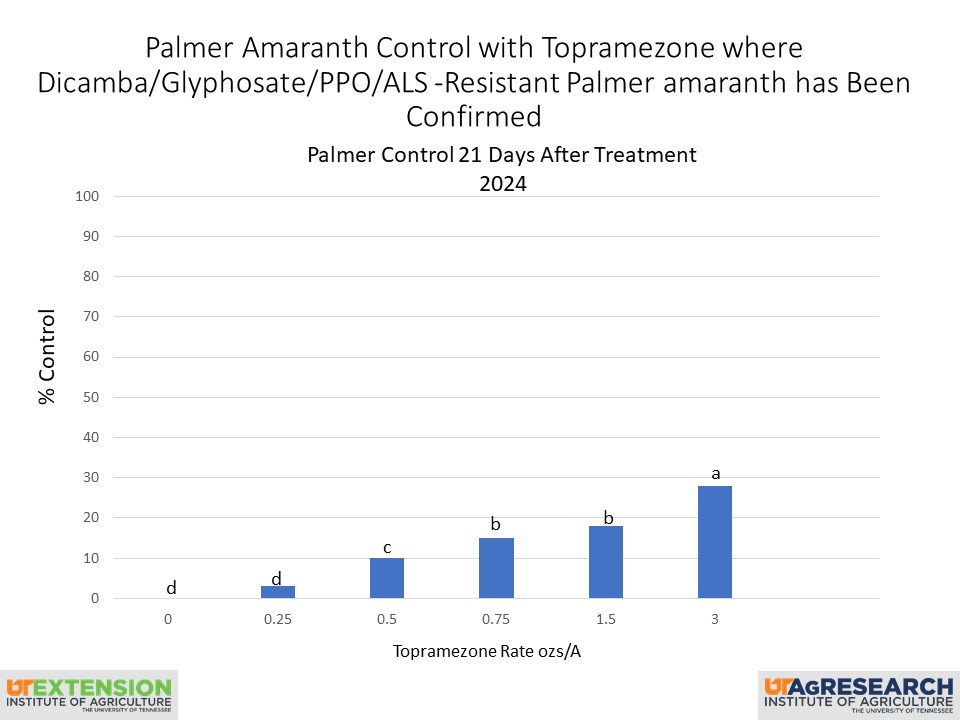Last fall there was a notable amount of Palmer amaranth in many corn fields in areas of the state where we had confirmed dicamba resistance. As a result, we have recently conducted some field screens on these pigweed populations to herbicides used in corn and soybean.
Category Archives: Cotton
Managing Palmer Amaranth and Grass Burndown Escapes

There have been numerous fields where goosegrass, junglerice and Palmer amaranth were not controlled at burndown and the crop has emerged. In some cases, the wet weather delayed burndown to where Palmer amaranth and those grasses were too large to be effectively controlled with one pass of Gramoxone (Picture 1). In other cases, tillage used to help speed up field drying or to build beds partially buried pigweed and grasses which make effective burndown from Gramoxone very problematic (Picture 2). In a few cases, dicamba and glyphosate were used for burndown and they did not control those weeds due to resistance (Picture 3). Continue reading
Yield potential and management of late planted cotton

In almost every cotton-related conversation I had during early May, the conversation quickly turned to our excellent early planting window- a window which opened earlier in 2024 than any of recent memory. Since then, most have fought to find an opportunity to mud in any acres and many are now considering shifting some farms to soybeans. In this blog, I attempt to cover yield potential of a late planted cotton crop and highlight several very important factors to consider when planting cotton at the end of our ‘normal’ planting window. Continue reading
Impregnated Pyroxasulfone (Zidua or Anthem Flex) on Fertilizer Application in Cotton Updated
Zidua (pyroxasulfone) applied via impregnated fertilizer in cotton has become popular in Tennessee. My understanding is that about 25% of the cotton acres last year had Zidua applied in this fashion. With the increasingly poor Palmer amaranth and grass control we are experiencing with dicamba + glyphosate, overlaying residual herbicides must be the foundation for weed control. Continue reading
EPA Requests Comments on Acephate Cancellation Proposal
The EPA is soliciting public comment on a registration review decision where the EPA proposes to cancel all uses of acephate, except for injections to non-food bearing trees. Acephate is widely utilized in Tennessee row crop agriculture and is a critical component of IPM programs. Cancelling an important crop protection product would place increased pressure on a limited number of control options available to producers. We are encouraging agricultural professionals to comment to the EPA on the impacts acephate has on your production systems. If you need assistance with comments please contact your UT extension specialist. The link to comment is below. Deadline for comments is July, 1, 2024.
https://www.regulations.gov/docket/EPA-HQ-OPP-2008-0915/document
EPA-HQ-OPP-2008-0915
Cotton Scout School (May 21, 2024)
The UT Cotton Scout School is scheduled for Tuesday, May 21st, at the West Tennessee Research and Education Center (605 Airways Blvd, Jackson). There is no fee, and preregistration is not required. Registration begins at 8:00 AM with the program starting at 8:30. Pesticide points in categories 1, 4, 10 and 12 will be offered and a BBQ lunch will be provided. Content will include classroom and hands-on training with an optional go-to-the-field session after lunch. Topics covered will include cotton development and identification and symptoms of insect pests, plant diseases, and weeds.
Best Management Practices for Liberty Applications
Palmer amaranth emergence is very rapid now. This is about a month early for Palmer emergence to be at this pace in Tennessee. With the spread of dicamba resistance in our Palmer amaranth population Liberty is our last best hope to control dicamba-resistant pigweed escapes in cotton and soybean. This is just a quick reminder that the time of day that Liberty is applied has a large determination on the success or failure of that application. Continue reading
Early Season Thrips Considerations in Cotton
With warm conditions moving into West TN, many producers are underway with cotton planting. Below are a few things to consider with regards to thrips control.
ThryvOn: ThryvOn is Bayer’s Bt technology that has activity on thrips and plant bugs. ThryvOn cotton varieties are very effective against thrips and it is not anticipated that any fields will need foliar treatments. ThryvOn will still have thrips present (adults and immatures) but insecticide applications should not be triggered on thrips numbers but damage level (Fig 1.). Applications should be initiated when plant damage is approaching 3 in figure 1. That being said, I’ve evaluated ThryvOn varieties for several years under excellent and terrible growing conditions and I as well as my colleagues across the cotton belt, have never recommended a foliar spray for thrips.

Insecticide Seed Treatments (ISTs): ISTs are the predominate control method for thrips in cotton. IST performance can be highly variable depending on weather conditions and thrips pressure. High thrips pressure and poor growing conditions will often necessitate the use of foliar sprays even with ISTs. Seed treatment packages typically come in a base (storage rate of imidacloprid + fungicide) and field rates of imidacloprid (these have several names) + fungicides, others may have nematicides, biologicals etc. Base treated seed may as well have no insecticide, the small stored product rate will offer almost no control of insects in the field. Standard options of imidacloprid (0.375 mg ai/seed) are the minimum needed for insect control in field cotton.
In-furrow: In-furrow liquid applications of imidacloprid are more effective than seed treatments; however, resistance development to neonicotinoids are diminishing the efficacy of imidacloprid in-furrow. Fields with in-furrow imidacloprid may still require a foliar spray under heavy thrips pressure. Granular AgLogic (aldicarb 15G) is highly effective against thrips populations and works like aldicarb should.
Foliar Spray Options: My recommendations are going to be limited for foliar sprays. Based on ongoing tobacco thrips resistance monitoring, to organophosphates (OPs), started by Scott Stewart several years ago, I am hesitant to recommend Orthene or Bidrin for thrips sprays. Resistance levels, in assayed populations from West TN, and the number of complaint calls I received last year are a good indication that OPs have limited use against our tobacco thrips populations. There may be areas where OP’s worked last year but it’s hard to say if they will work this year. That being said, Intrepid Edge at 3.0 fl oz/a is my go to for foliar thrips control. Although more expensive than the OPs, Intrepid Edge runs no risk of flaring mites or aphids and a surfactant has shown to increase efficacy (herbicide surfactants will work if you’re co-applying). Recolonization vs failure is another subject with foliar sprays. Presence of adults doesn’t mean the application didn’t work, adult thrips are always present on seedling cotton. Presence of immature thrips means adults are feeding and laying eggs and whatever control method you used is broken.
I am big believer in NCSU’s thrips predictor model https://products.climate.ncsu.edu/ag/cottontip/. We utilize the model to target planting when thrips numbers are highest, growers would do the opposite. Model runs for locations around West TN show that cotton planted May 1st through the 15th have a low to medium probability of experiencing large thrips populations. This is hopefully a welcome relief from years of cold, wet springs with large thrips populations plaguing our cotton. The warm weather will help germinate cotton quicker and standard ISTs may be enough to push us to the 4 true leaf stage (when thrips are typically no longer a concern) without a foliar spray.


